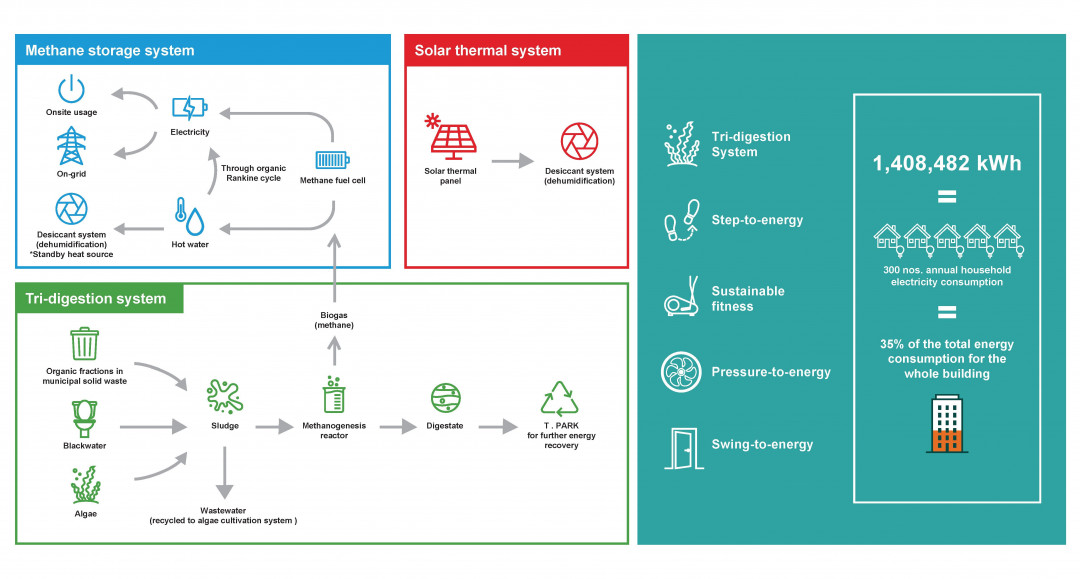The Living Lab – accelerating net zero with digital




The Living Lab is proposed to transform the existing Oxford House towards zero-carbon and healthy development that will achieve next zero by 2050. The proposal adopts a data-driven approach in building operations, incorporating cutting-edge technologies in renovation plans with a practical methodology and timeline, as well as cost estimation for reference.

The whole life cycle carbon of existing buildings consists of upfront carbon, use stage embodied carbon and operational carbon. Operational carbon can be eliminated through passive, active design and onsite renewables. The embodied carbon can be reduced by adopting modular design for interior fit out. The remaining can be offset by other strategies.
Clean, fresh air for a quality indoor environment
Since COVID-19, the industry has updated the air exchange rate to reduce the pathogen spreading in indoor areas. However, this might increase the cooling energy and may bring pollutants to indoor environments. To tackle these issues, The Living Lab adopts a data-driven ventilation control with combined air purification processes to ensure a healthy environment.

Generating renewable energy onsite
The onsite renewable energy system comprises a macro and micro-harvesting system. The macro-harvesting system includes a tri-digestion methane generation system and solar thermal system. The tri-digestion system uses sludge obtained from food waste, blackwater and algae to produce methane for electricity generation. Hot water produced from the cooling fuel cell and solar thermal system is used for dehumidification, and to keep the algae alive in winter. The micro-harvesting system captures the ‘daily wasted/unused energy’, from swing doors, water flow inside pipes to footsteps in communal areas.
The onsite renewable energy system provides 35% of total building energy consumption while achieving zero organic waste generation, which is also one of the key objectives in the government’s Waste Blueprint for Hong Kong 2035.


Achieving net zero in 2050
The Living Lab is an exemplar project for net-zero buildings, the total design brings a 67% reduction in operational carbon emission comparing to the baseline case. For the newly adopted system, their corresponding carbon payback is within 1.8 years through the 40+ strategies. Together with the supply side decarbonisation, the building targets to achieve net zero in 2050.

All images © Arup









 Indonesia
Indonesia
 Australia
Australia
 New Zealand
New Zealand
 Philippines
Philippines
 Singapore
Singapore
 Malaysia
Malaysia






